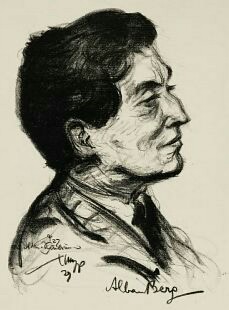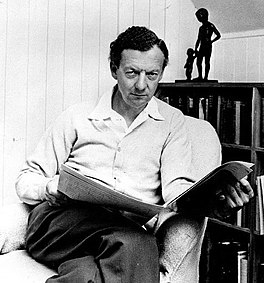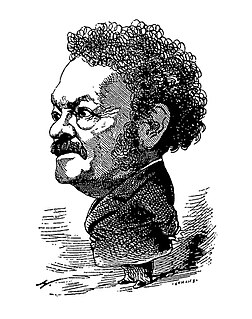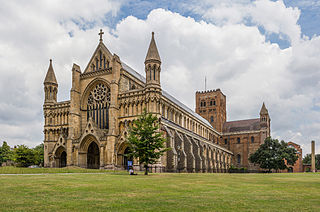
Aida is an opera in four acts by Giuseppe Verdi to an Italian libretto by Antonio Ghislanzoni. Set in the Old Kingdom of Egypt, it was commissioned by Cairo's Khedivial Opera House and had its première there on 24 December 1871, in a performance conducted by Giovanni Bottesini. Today the work holds a central place in the operatic canon, receiving performances every year around the world; at New York's Metropolitan Opera alone, Aida has been sung more than 1,100 times since 1886. Ghislanzoni's scheme follows a scenario often attributed to the French Egyptologist Auguste Mariette, but Verdi biographer Mary Jane Phillips-Matz argues that the source is actually Temistocle Solera.

Fidelio, Op. 72, is Ludwig van Beethoven's only opera. The German libretto was originally prepared by Joseph Sonnleithner from the French of Jean-Nicolas Bouilly, with the work premiering at Vienna's Theater an der Wien on 20 November 1805. The following year, Stephan von Breuning helped shorten the work from three acts to two. After further work on the libretto by Georg Friedrich Treitschke, a final version was performed at the Kärntnertortheater on 23 May 1814. By convention, both of the first two versions are referred to as Leonore.

Saint Ansfried of Utrecht was Count of Huy and the sword-bearer for Otto I, Holy Roman Emperor. He became Bishop of Utrecht in 995. He appears to have been the son or grandson of Lambert, a nobleman of the Maasgau, the area where he later founded the Abbey of Thorn, and to have been related to various important contemporaries including the royal family.

St. Canute's Cathedral, also known as Odense Cathedral, is named after the Danish king Canute the Saint, otherwise Canute IV. It is a fine example of Brick Gothic architecture. The church's most visited section is the crypt where the remains of Canute and his brother Benedict are on display.

Saint Philip Howard, 20th Earl of Arundel was an English nobleman. He was canonised by Pope Paul VI in 1970, as one of the Forty Martyrs of England and Wales. He is variously numbered as 1st, 20th or 13th Earl of Arundel.

Wozzeck is the first opera by the Austrian composer Alban Berg. It was composed between 1914 and 1922 and first performed in 1925. The opera is based on the drama Woyzeck, which was left incomplete by the German playwright Georg Büchner at his death. Berg attended the first production in Vienna of Büchner's play on 5 May 1914, and knew at once that he wanted to base an opera on it. From the fragments of unordered scenes left by Büchner, Berg selected fifteen to form a compact structure of three acts with five scenes each. He adapted the libretto himself, retaining "the essential character of the play, with its many short scenes, its abrupt and sometimes brutal language, and its stark, if haunted, realism..."

Saint Amphibalus is a venerated early Christian priest said to have converted Saint Alban to Christianity. He occupied a place in British hagiography almost as revered as Saint Alban himself. According to many hagiographical accounts, including those of Gildas, Bede, Geoffrey of Monmouth, and Matthew of Paris, Amphibalus was a Roman Christian fleeing religious persecution under Emperor Diocletian. Saint Amphibalus was offered shelter by Saint Alban in the Roman city of Verulamium, in modern-day England. Saint Alban was so impressed with the priest's faith and teaching that he began to emulate him in worship, and eventually became a Christian himself. When Roman soldiers came to seize St. Amphibalus, Alban put on Amphibalus' robes and was punished in his place. According to Matthew Paris, after St. Alban's martyrdom, the Romans eventually caught and martyred Amphibalus as well.

Khovanshchina is an opera in five acts by Modest Mussorgsky. The work was written between 1872 and 1880 in St. Petersburg, Russia. The composer wrote the libretto based on historical sources. The opera was unfinished and unperformed when the composer died in 1881.

Mathis der Maler is an opera by Paul Hindemith. The opera's genesis lay in Hindemith's interest in the Reformation. The work's protagonist, Matthias Grünewald, was an actual historical figure who flourished in that era, and whose art, in particular the Isenheim Altarpiece, inspired many creative figures in the early 20th century, including Joris-Karl Huysmans's novel Là-bas.

The Rape of Lucretia is an opera in two acts by Benjamin Britten, written for Kathleen Ferrier, who performed the title role. Ronald Duncan based his English libretto on André Obey's play Le Viol de Lucrèce.

St Peter's Church is a parish church in the Church of England. It is located in St Albans, England, to the north of the town centre.

The St Albans Psalter, also known as the Albani Psalter or the Psalter of Christina of Markyate, is an English illuminated manuscript, one of several psalters known to have been created at or for St Albans Abbey in the 12th century. It is widely considered to be one of the most important examples of English Romanesque book production; it is of almost unprecedented lavishness of decoration, with over forty full-page miniatures, and contains a number of iconographic innovations that would endure throughout the Middle Ages. It also contains the earliest surviving example of French literature, the Chanson de St Alexis or Vie de St Alexis, and it was probably commissioned by an identifiable man and owned by an identifiable woman. Since the early 19th century it has been owned by the church of St. Godehard, but is now stored and administered at the nearby Dombibliothek. A single leaf from the manuscript is at the Schnütgen Museum, Cologne; one further leaf, and one further cutting, are missing from the volume, their whereabouts unknown.

Les martyrs is a four-act grand opera by Gaetano Donizetti set to a French libretto by Eugène Scribe. The libretto was based on one written by Salvadore Cammarano for an original Italian version known as Poliuto, which was not performed until after the composer's death. Pierre Corneille's play Polyeucte written in 1641–42, the story of which reflected the life of the early Christian martyr Saint Polyeuctus, is the original source for both versions.
(Albert) Meredith Davies CBE was a British conductor, renowned for his advocacy of English music by composers such as Benjamin Britten, Frederick Delius and Ralph Vaughan Williams.

Francis Walter Skeat was an English glass painter who created over 400 stained glass windows in churches and cathedrals, both in England and overseas. Skeat was a Fellow of the Royal Society of Arts, a Fellow of the British Society of Master Glass Painters, and a member of the Art Workers Guild.

Saint Bavo of Ghent (622–659) was a Roman Catholic and Eastern Orthodox saint.



















